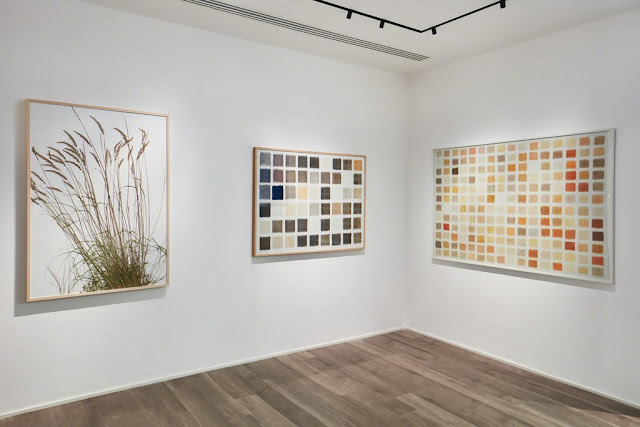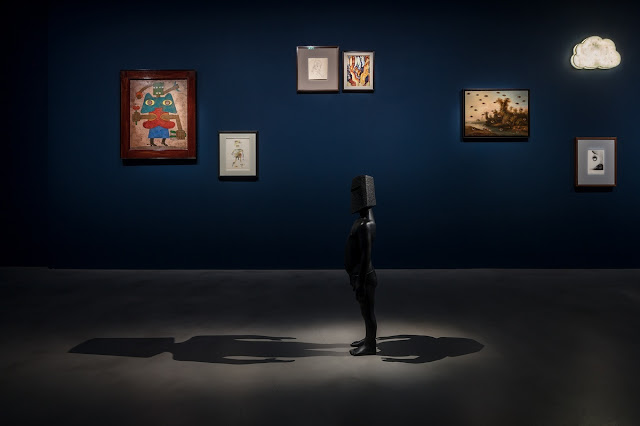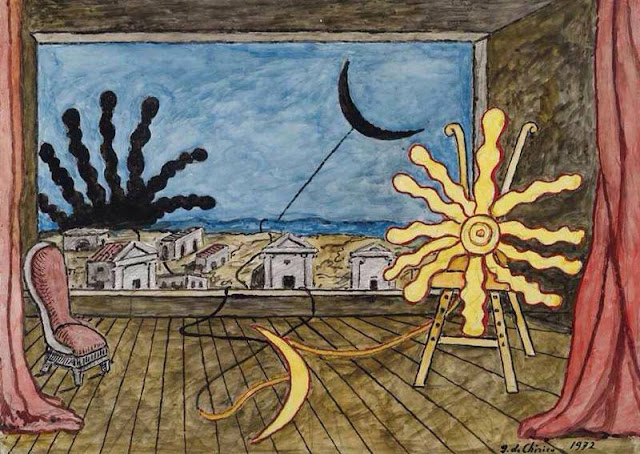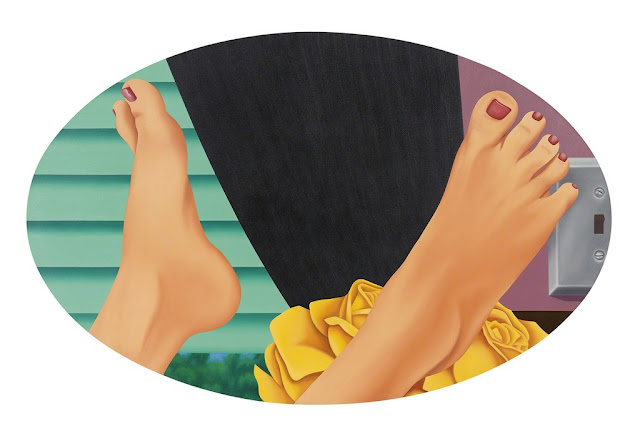Paul Carey-Kent presents his recommended London Art exhibitions for November 2017. It is a varied selection containing a number of different mediums and styles.
Hiroshi Sugimoto: Snow White @ Marian Goodman Gallery, 5-8 Lower John St – Soho
To 22 Dec

Union City Drive-In, Union City, 1993
Hiroshi Sugimoto’s photographs of movie theatres taken over the full course of a screening so that – typically – 170,000 images coalesce to form a white screen, tick enough conceptual boxes (time, absence, abstraction…) to have become a staple of themed group shows. But what is gained by seeing 20 of them together? Plenty, as it turns out: the shadowed detail around the screen is captivating in large format, and varies considerably between the sub-subjects here: still operative cinemas; abandoned theatres in which Sugimoto reintroduced a screen and projected a film to take his photograph; drive-in screens; and Italian opera houses – architectural inspiration for the American theatres which Sugimoto first started filming in 1976 – for which the film is typically projected onto the stage curtains.

Paramount Theater, Newark, 2015
______________
Florence Peake: Rite @ Studio Leigh, 6 Garden Walk – Shoreditch
To 16 Dec
Still from Rite
Studio Leigh’s first show across the road from its former space sees dancer-artist Florence Peake draw multi-formed multi-collaborative inspiration from the Rite of Spring. Little of the music is heard, but the centrepiece is a film in which Rosemary Lee, shot from a dramatic overhead view, battles her way out from under a bed of wet clay to the internalised sound of Stravinsky’s score, expiring after 14 minutes of dancing herself into birth and then, as in the ballet, to death. That floor has been cut into a grid and fired to make a performative sculpture. Peake herself has danced Rite-rhythmed body drawings – onto oil-primed paper and a plywood board with sand and plaster – and made half-cairn, half-human sculptures tapping into the primitive forces of the Rite. The elements come together to make an visceral and active composition.
Installation view with The Ancestors and Spring Rounds (on wall)
______________
XVII: The Age of Nymphs @ Mimosa House, 12 Princes Street – Oxford Circus
To 13 Jan

Upper installation view with Nika Neelova, Folded Rooms, perimeter of studio traced in stainless steel and wax and folded, 2017 – Photo: Damian Griffiths
A surprisingly extensive and central new project space makes the most of its unusual set-up here through a Russian-oriented show which has an underworld, a transitional corridor and a more ethereal upper zone, all tied in to the number 17 – as in the anniversary of 1917’ revolution, the number of years Putin has been in power, and the time cicadas spend underground prior to their ‘resurrection’ for a month of mating. Olga Grotova’s films hook us into the cyclic calm of nuns who look as if they’ve stepped out of a Helmut Newton photo; Nika Neelova turns the topography of a shucked-off exoskeleton hanging below into a coolly folded room above; Yelena Popova provides both apparently evaporated portraits, as from the deep past, and an empty cut-out awaiting future faces; undeterred by their lack of tymbals to flex and wings to flick, Neelova and Mira Calix team up to imitate both male and female cicadas in the corridor, crossing sex and species boundaries and referencing the mythical transformation of people into the insects when first introduced to and overpowered by music. Does it all cohere? I’m not sure, but it’s certainly worth the pondering.

Lower installation view with Olga Grotova, The Ice Rink, video, sound, 11’40, 2017 and Nika Neelova, Exuviae, 2017 – Photo: Damian Griffiths.
______________
Stuff / Sarah Pager / Charlie Warde @ Lubomirov / Angus Hughes, 26 Lower Clapton Rd – Hackney Baths
To 26 Nov

Chris Jones: Last Things Last, 2017 – book and magazine images, digital printouts, wallpaper, lenticular postcards, paper, board, wire, polymer varnish
Three interesting shows in the same building… The biggest is Becca Pelly-Fry’s exceptionally tight curation ‘Stuff’ on over-accumulation. Comedian George Carlin (‘home is a place to keep your stuff while you go and get more’) sets the tone for seven artists, centered around Chris Jones’ computer and surrounding detritus made mainly out of magazine pictures. Phil Thompson presents a flash film of images found on discarded USB sticks; Alice Mendelowitz’s paintings are designed not to take up space; and Richard Pasquarelli paints with precise simplification from his photographs of the homes of OCD organisers and compulsive hoarders respectively*. Elsewhere Sarah Pager has a lively show as artist in residence (towers of bins, lots of apples, a hypnotic animation made by multiplying one lone fly). And you can read my text on the third show, Charlie Warde’s ‘Disappearing Landscape’, either here or on the basement gallery’s wall.
* here Pasquarelli shows sentimental hoarders, who keep stuff for its connections: he told me the other main types are information, aesthetic and recycling hoarders
Richard Pasquarelli: Ed No.3 and Sirje No. 1, 2017 – oil on linen

Installation shot: Sarah Pager, Harvest, 2017
______________

Chaim Soutine: Pastry Cook of Cagnes, 1922
The place to be at the moment is Somerset House and surrounds: there’s a wonderful 21-work Soutine portrait show at the Courtauld, Hassan Hajjaj has an innovative presentation in the Terrace Rooms, and Lisson (with twenty major installations), Vinyl Factory and the Koenig Gallery have projects a few yards away on the Strand…
Richard Long’s Avon mud painting for the Lisson show is, well, long – 60 metres…
And then there’s this…
Melancholia. A Sebald Variation @ Inigo Rooms, King’s College London, Somerset House East Wing
To 10 Dec: www.kcl.ac.uk/Cultural/-/Projects/Melancholia.aspx

Still from Guido van de Werve: Nummer Veertien: Home, 2012
With so many big shows having opened for Frieze week it would be easy to omit the basement galleries under Somerset House’s East Wing, but that would be a mistake. Rather, you should take two hours out of the hurly-burly for this paradoxically uplifting exploration of melancholy. Inspired by WG Sebald, especially ‘On The Natural History of Destruction’, it starts with Durer, incorporates the WW2 bombing of Germany and unseen work by Tacita Dean and Anselm Kiefer among others, and pivots on a cinematic presentation of Guido Van der Werve’s hypnotic 54 minute film Number Twelve, Home, which starts on the hour and demands to be seen in full. Then you can ponder whether ‘in the description of the disaster’, as Sebald claimed, ‘lies the possibility of overcoming it’.
Jeremy Wood: My Ghost, 2015 – a GPS track of his movements around London over 15 years
______________

Herman de Vries: The Return of Beauty @ Cortesi Gallery, 41 & 43 Maddox St – Mayfair
To 18 Nov: www.cortesigallery.com
Herman de Vries (born 1931) was part of the zero movement in the early 60’s, from which material minimalism he has progressively infused the natural, its relation to man, and – as flagged by the title here – the potential return to beauty through the man-made’s reintegration with nature. He represented the Netherlands in the 2015 Venice Biennale, but has shown little here, so this impressive retrospective is most welcome. By way of a taster, it includes thousands of rose buds; various shades of ashes; all the leaves from a given branch; meadowland pressed behind glass; newspaper in systematically varied stages of deterioration; and a text work which enjoins us to ‘be happy’ – as de Vries does at the end of his phone calls – but repeats the word ‘happy’ thousands of times in a rainbow of colours. You’ll be happier if you see it.

______________
Light in Motion: Balla, Dorazio, Zappettini @ Mazzoleni, 27 Albemarle St – Central
To 9 Dec: www.mazzoleniart.com

Giacomo Balla, Compenetrazione iridiscente N. 15 , c. 1912
The Turin / London gallery uses its newly-expanded exhibition spaces effectively to set up a series of cross-generational trialogues revealing the affinities between the Italians Giacomo Balla (1871-1958), Piero Dorazio (1927-2005) and Gianfranco Zappettini (born 1939). Balla’s ‘iridescent interfaces’ in particular shimmer in the manner of work made 50 years later, but the less directly futurist works seen here were largely forgotten until championed by his much-younger friend Dorazio in the late 50’s. Dorazio himself feeds the other key influences of Mondrian and Delaunay into explorations of colour and wave which, judged by Frieze Masters, are increasingly sought after. Zappettini draws the viewer into the optical and structural syncopation simply by applying plastic – sometimes coloured – over black and white drawings.

Gianfranco Zappettini, Strutture in BX 2 , 1965-1967 , 80 x 80 cm
______________
Martin Puryear @ Parasol unit, Wharf Road – Hoxton
To 6 Dec: http://parasol-unit.org
Night Watch, 2011 – Maple, willow, OSB board, 295 x 310 x 122 cm – Photography by Benjamin Westoby
A storied fifty year career lies behind Martin Puryear’s overdue first UK retrospective, which nods to his original training as a print maker but concentrates on a substantial grouping of sculptures. They succeed by combining subtlety – in the hand-honed use of wood in particular, in how undidactically the history of the African diaspora is invoked – with a frequently large scale and clarity of forms which achieve a human yet mysterious ‘rightness’ which is easy to recognise but hard to pin down. There’s plenty of ambiguity too: is Night Watch a field of corn, a hair transplant writ large, a broom to sweep away or bristle to enumerate the anxieties of insomnia, or a reference to Rembrandt?

Big Phrygian, 2010–2014. Painted red cedar, 147 x 102 x 193 cm, Photography by Benjamin Westoby
______________
Laurent Grasso: The Panoptes Project @ Olivier Malingue, 143 New Bond Street – Central
To 9 Dec: http://oliviermalingue.com

Laurent Grasso, The Panoptes Project at Olivier Malingue, London. Photo: Marcus Peel
This unusual, dramatically lit, dark-walled show comes from inviting Laurent Grasso (well-known in France as winner of the Turner-equivalent Marcel Duchamp prize in 2008) to combine his own work with choices from the gallery’s secondary market collection: Ernst, Picabia, Picasso, Magritte, Brauner… Grasso immerses us in gazes echoing the myth of Argos Panoptes, a giant covered with a myriad of eyes. His own additions of floating eyes onto found landscapes, and eyes-only copies of historical portraits, act as recurring motifs as surveillance, astrological observation and voyeurism come into play… I
I
Laurent Grasso, The Panoptes Project at Olivier Malingue, London. Photo: Marcus Peel
______________
Giorgio de Chirico: Getafisica da Giardino @ Nahmad Projects, 2 Cork St and Reading de Chirico @ Tornabuoni Art, 46 Albemarle St – Central
To 15 Dec (Nahmad) / 10 Jan (Tornabuoni)

Sun and Moon, 1972
Happy times if , like me,you like all phases of de Chirico. Nahmad has the odder of two substantial shows, for which Francesco Vezzoli installs paintings against a wallpaper background of de Chirico motifs, complete with astroturf floor. There are 18 de Chirico’s: first run 1920’s classics, later ‘self-copies’ of the same subjects, some misdated by the artist (can you forge yourself? Discuss), self-portraits in his ‘old master’ style… and an ante-room full of the little-known late motif of the sun as a character which can, for example, sit on a chair. Vezzoli contributes three works: paintings which vary de Chrico’s originals in appropriate spirit, and a classical torso to which he has added a de Chirico head à la tailor’s dummy. Great fun, and well complemented by the more scholarly presentation of 25 de Chirico’s at Tornabuoni.
Installation view at Nahmad Projects
______________
Tom Wesselmann: Bedroom Paintings @ Gagosian Davies Street & Tom Wesselmann @ Almine Rech, Grosvenor Hill – Mayfair
To Dec 16
Bedroom Painting #21, 1969-1975
I guess one thinks of breasts for Tom Wesselmann’s pictures of body elements, but hands and feet star in the Gagosian half of this double-bill. In the oval Bedroom Painting #21, you might think they are set against abstract elements, but that radical black centre is a curtain, overlapping a green blind, allowing a slither of landscape; and we see yellow flowers, a section of purple wall and a light switch. And if you find it a little cold in its rigorous, formal, implicitly sexual organisation – what are these, adverts for parts of women? – then there’s a warmer, more intimate feel to the complementary show of later work in Almine Rech’s newly-opened basement space, All include the face, such as this mother and baby study, which flowed into a shaped canvas of 1979-91.
Study for Barbara and Baby, 1979
______________
Nature Morte @ Guildhall Art Gallery, Guildhall Yard – City of London
To 2 April 2018, £8: www.cityoflondon.gov.uk/things-to-do/visit-the-city/attractions/guildhall-galleries
Caroline McCarthy: Vanitas, 2007
The large but little known Guildhall Art Gallery has a significant collection of Victorian paintings, currently complemented by and integrated with over 100 contemporary still lives. They provide new spins on flora, vanitas, food and domestic objects in a show – organised by Peckham’s MOCA – which toured the world three years before arriving in London. You’ll find, Andro Semeiko’s 1.5m square “Very big chocolate cake”, a tribute to potential excess, more healthily topped by a 2 m high painting of cherries by Martin Gustavsson; and library of woodland books by Conrad Bakker; a Fright Wig made from household dust by Paul Hazelton; Caroline McCarthy’s image of a skull made from Ben-Day dots punched out of a binbag hung next to it, waste to waste; and two classic Fantin-Latour florals – while both Philip Pirolo and Michael Petry (also the lead curator) make striking works which equate flower and anus.
Michael Petry: Red Roses, 2009 – one of three blown glass and cut flower arrangements in which the rim of the vase is taken from online submission of anus shapes, and each flower choice represents a man’s sexual preferences via the 1970’s gay hanky colour code.
______________
Images courtesy / copyright the relevant artists and galleries

